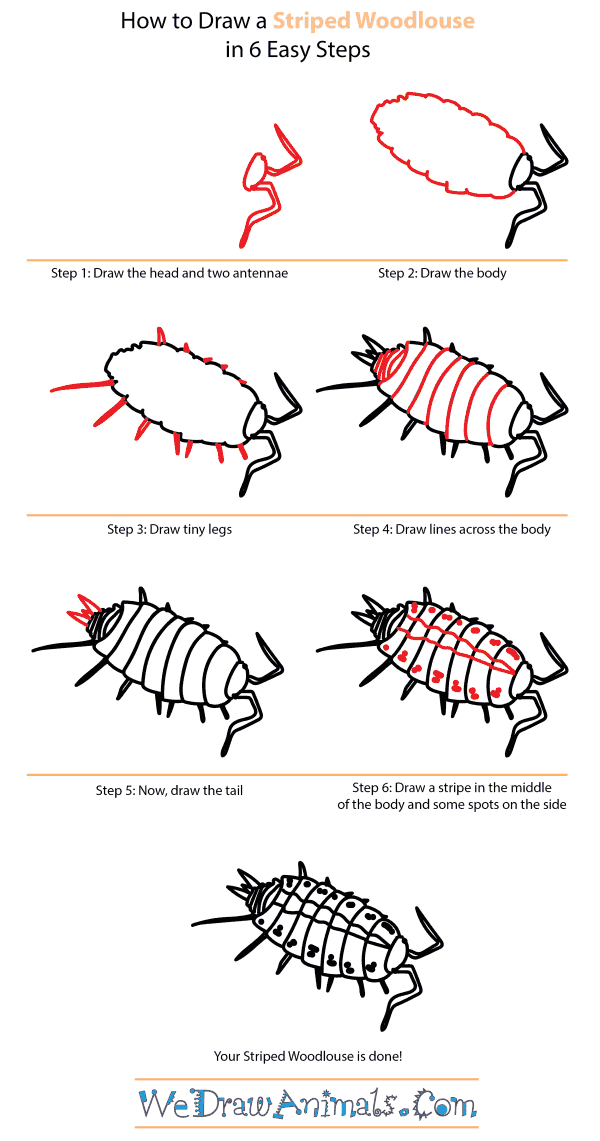In this quick tutorial you'll learn how to draw a Striped Woodlouse in 6 easy steps - great for kids and novice artists.
The images above represent how your finished drawing is going to look and the steps involved.
Below are the individual steps - you can click on each one for a High Resolution printable PDF version.
At the bottom you can read some interesting facts about the Striped Woodlouse.
Make sure you also check out any of the hundreds of drawing tutorials grouped by category.
How to Draw a Striped Woodlouse - Step-by-Step Tutorial
Step 1: Draw a half circle (closed) and two crooked antennae
Step 2: Draw an oval cloudshaped body
Step 3: Draw fourteen tiny legs (seven on each side)
Step 4: Draw lines across the body to make it look like its hard shell
Step 5: Add the tail spikes
Step 6: Continue detail with spots and stripes along the back of the body
Interesting Facts about the Striped Woodlouse
This small creature strongly resembles many different kinds of insects, but is much more closely related to shrimp and, to a lesser degree, other crustaceans. Their bodies are divided into three sections. The first is the head. Second is the thorax, or “pereion” as it is called, and third is the abdomen, or “plean.” Their entire bodies are brownish in color with pale whiteish patches, and they only grow up to eleven millimeters in length. They also have a clear stripe that goes down the centers of their backs. This animal will moult many times as it grows, shedding its outer skin to grow a better, bigger skin that suits their current size.
Did you know?
- The striped woodlouse eats dead things, either plants or animal life, that they can detect by both taste and smell.
- They are a nocturnal species, spending their days beneath stones, logs and other objects that keep them shaded and cool.
- If the woodlouse feels threatened, it will clamp its legs down tightly onto its favored surface, determined not to let go.
- Young woodlouses don’t look very different from their adult counterparts. The only real difference is their size.
- Adults will continue to molt all their lives, even after reaching full maturity.
The woodlouse will molt many times over the span of its life. The stages between molts are referred to as “stadia.” What is left over is called a “cuticle,” and will often be eaten by the freshly molted woodlouse. This resilient animal can live in many kinds of habitats, and are incredibly common in Britain. Because the mating procedures of this species take place at night, there is not much that has been researched about the mating processes of this particular creature.







